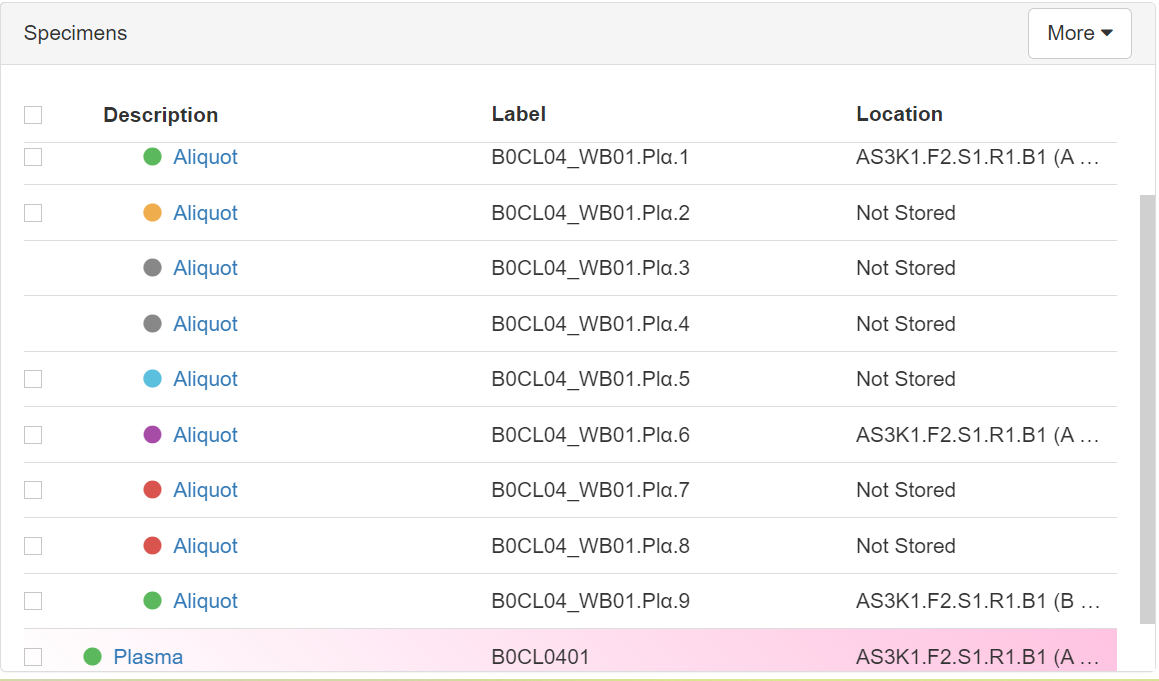...
...
...
...
| Table of Contents |
|---|
OpenSpecimen helps capture the entire lifecycle of the specimens starting from the collection, processing, storage, and distribution. This page explains different features of OpenSpecimen to add specimen information in various scenarios.
Lineage of specimens: After collection, specimens are often processed into different forms for storage. For example, Blood is collected and processed into Plasma, PBMC, and Buffy Coat. In OpenSpecimen, each level can be indicated as a ‘specimen’ as primary, derivative, or aliquot.
Hierarchy of the specimens: To indicate the lineage of specimens, ‘specimen tree’ can be viewed in OpenSpecimen.
Different status of the specimen: A color-coding scheme for specimens allows you to quickly identify the status of a specimen as to whether it is collected, stored, distributed, or discarded. For more details, refer to the specimen color coding section on this page.
Default specimen annotations: Generic details like specimen type, anatomic location, quantity, etc., are captured in default data entry pages.
Custom annotations: Additional annotations like test results and pathology annotations can be captured using custom forms.
Planned collection: For studies where what type of specimens is collected and how it is processed is known in advance, the protocol can be set up with all details to make data entry simpler.
Unplanned collection: When specimen collection details are unknown, they can be entered as unplanned specimens.
| Gliffy | ||||||||||||||
|---|---|---|---|---|---|---|---|---|---|---|---|---|---|---|
|
Planned Specimen Collection
...
For more details, refer to Scanning specimens from box scanners
Bulk Import Specimen Data
...
For more details, refer to Moving primary specimens from one visit to another.
Specimen Color Coding
OpenSpecimen displays the color code code for specimens specimens based on its status.
| Expand | ||||||||||||||||||||||||
|---|---|---|---|---|---|---|---|---|---|---|---|---|---|---|---|---|---|---|---|---|---|---|---|---|
| ||||||||||||||||||||||||
|

